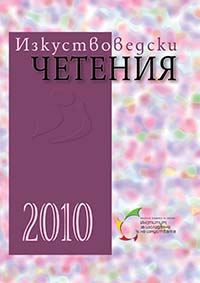„Хиперреализмът” в анимационното кино – баланс на ръба на „странната скала”
Hyper-Realism in Animation – Balancing on the Edge of the ‘Uncanny Cliff’
Author(s): Nadezhda MarinchevskaSubject(s): Fine Arts / Performing Arts
Published by: Институт за изследване на изкуствата, Българска академия на науките
Summary/Abstract: The ‘Disney’ model in full-length animation is based on the true anatomic drawing of the human figure and ‘natural’ movement. This hyper-realistic model continues to be leading in commercial animation today. The computer generated images (CGI) also strive to create the illusion of ‘hyperreality’ in the imaginary animation worlds. The article focuses on the theory about the ‘uncanny valley’ of the Japanese scholar Masahiro Mori who studies the changes in viewers’ approval or rejection of the image depending on the raise in the level of it anthropomorphism. The ‘uncanny valley’ is the area where viewers’’ approval is lost due to the feeling of ‘artificiality’ that repulses (alienates) the audience. Later a group of scholars that included Christoph Bartneck, Takayuki Kanda, Hiroshi Ishiguro and Norihiro Hagita revised Mori’s hypothesis and entitled their new research the ‘uncanny cliff. Regardless of the fact that the precise parameters of the dependency between the anthropomorphic image and the viewer’s perception have not been proven experimentally many animators take into consideration the negative effects and consequences of the literary copying of the real world and the risk that the feeling of the unreal that mimics the real could impair the perception (feeling) of human identity. Through computer simulations that copy human bodies and faces the authors attempt to stimulate the viewer to identify with the characters. But this also is dangerous territory where this expensive endeavor could topple down from the ‘uncanny cliff’ in the ‘uncanny valley’ of the viewers’ rejection. The creation of ‘trans-human’ images is very risky but will (not lose its attractiveness of the artists) always attract the artists. That is why Mori’s theory, although not very precisely described, will continue to be subject of discussions.
Journal: Изкуствоведски четения
- Issue Year: 2010
- Issue No: 6
- Page Range: 196-203
- Page Count: 8
- Language: Bulgarian
- Content File-PDF

